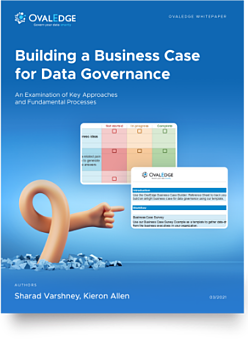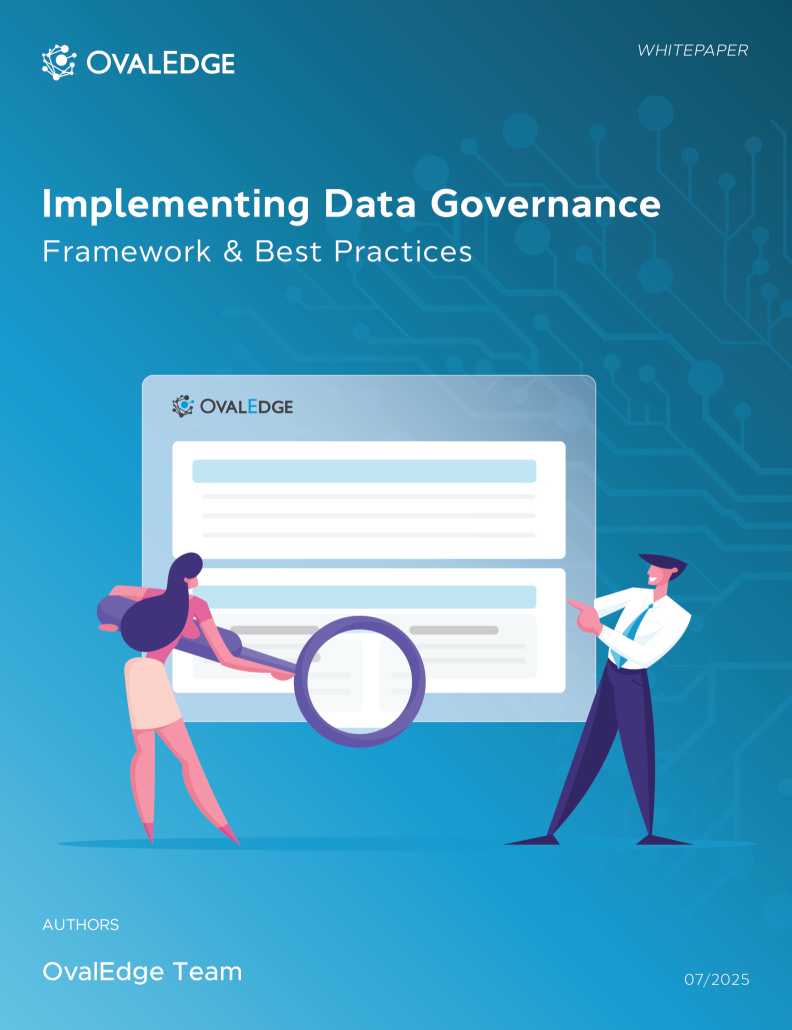Table of Contents
Data Dictionary Tools: Best Picks for 2025
As organizations juggle growing data systems, inconsistent definitions often create confusion and mistrust. A modern data dictionary brings order by standardizing meaning, ownership, and context across teams. In 2025, tools like OvalEdge lead this shift, combining automation, collaboration, and governance for trusted, compliant metadata. This blog highlights the top data dictionary tools, key features to look for, and best practices to ensure clarity, consistency, and confidence in every data-driven decision.
You know that moment when two teams use the same data but end up with completely different numbers? One says there are 5,000 active users, the other says 4,300, and suddenly, everyone’s in a meeting trying to figure out which one’s right. It happens more often than we’d like.
That’s where data dictionary tools make a real difference. They help you store and manage clear definitions for every field, column, and metric so no one argues over “what’s correct” again. In this blog, I’ll walk you through what a data dictionary is, why it matters, and how tools like OvalEdge can make your data clean, trusted, and easy to work with.
Let’s start with the basics: what exactly is a data dictionary, and why does it matter so much today.
What is a data dictionary and why does it matter
A data dictionary is a centralized reference that defines every element in your data, including field names, data types, formats, relationships, and business meanings. It acts as the single source of truth that helps teams understand what each piece of data means and how it should be used.
In simple terms, it’s like a guidebook for your organization’s data. When you use data dictionary tools, these definitions become searchable, structured, and automatically updated across systems. That means fewer reporting errors, faster analysis, and stronger collaboration between technical and business teams.
Modern data dictionary software goes beyond documentation. It supports metadata management, ensures data governance, and links every field to its source system. This helps maintain accuracy and compliance with frameworks like GDPR, HIPAA, or India’s DPDP Act (2023).
According to Gartner’s Market Guide for Active Metadata Management (2024), organizations that centralize and activate their metadata can reduce the time it takes to deliver new data assets by up to 70%.
That efficiency boost comes from having a single, reliable source of definitions, exactly what a strong data dictionary provides.
In short, a data dictionary tool helps you move from confusion to clarity. It gives your team confidence in every metric and turns disconnected data sources into reliable, well-governed information.
8 best data dictionary tools in 2025
Finding the right data dictionary tool can feel overwhelming. Some focus on simple documentation, while others bring automation, collaboration, and full-scale governance. To help you choose what fits your team best, here’s a look at eight of the best data dictionary tools in 2025, from lightweight open-source options to enterprise-ready platforms.
1. OvalEdge

OvalEdge brings together a data dictionary, data catalog, and governance layer into one connected platform. It’s built to help organizations move away from fragmented metadata systems and create a single, governed source of truth that everyone can trust.
Key features
-
Automated metadata discovery: Seamlessly extracts schemas, columns, and relationships from databases, warehouses, and SaaS applications.
-
Business glossary and collaboration: Let's have both technical and non-technical users define and enrich data terms with contextual meaning.
-
Governance workflows: Supports approval, certification, and review cycles to ensure accountability and compliance.
-
Lineage visualization: Displays end-to-end data flow, linking dictionary entries to upstream and downstream assets.
-
Data quality and curation automation: Detects inconsistencies, duplicates, and hidden relationships to keep metadata clean and reliable.
-
Access control and audit readiness: Includes role-based permissions and complete audit trails for governance teams.
Ideal for
OvalEdge is best suited for mid-to-large enterprises that want to unify metadata, governance, and cataloging in one governed space. It’s especially valuable for companies in regulated sectors like finance, healthcare, and telecommunications, where compliance, lineage, and trust are critical.
Explore how a unified data catalog and governance platform can simplify compliance, boost trust, and make data truly accessible across teams.Request a demo or talk to our team to see how OvalEdge fits into your data ecosystem.
2. Dataedo
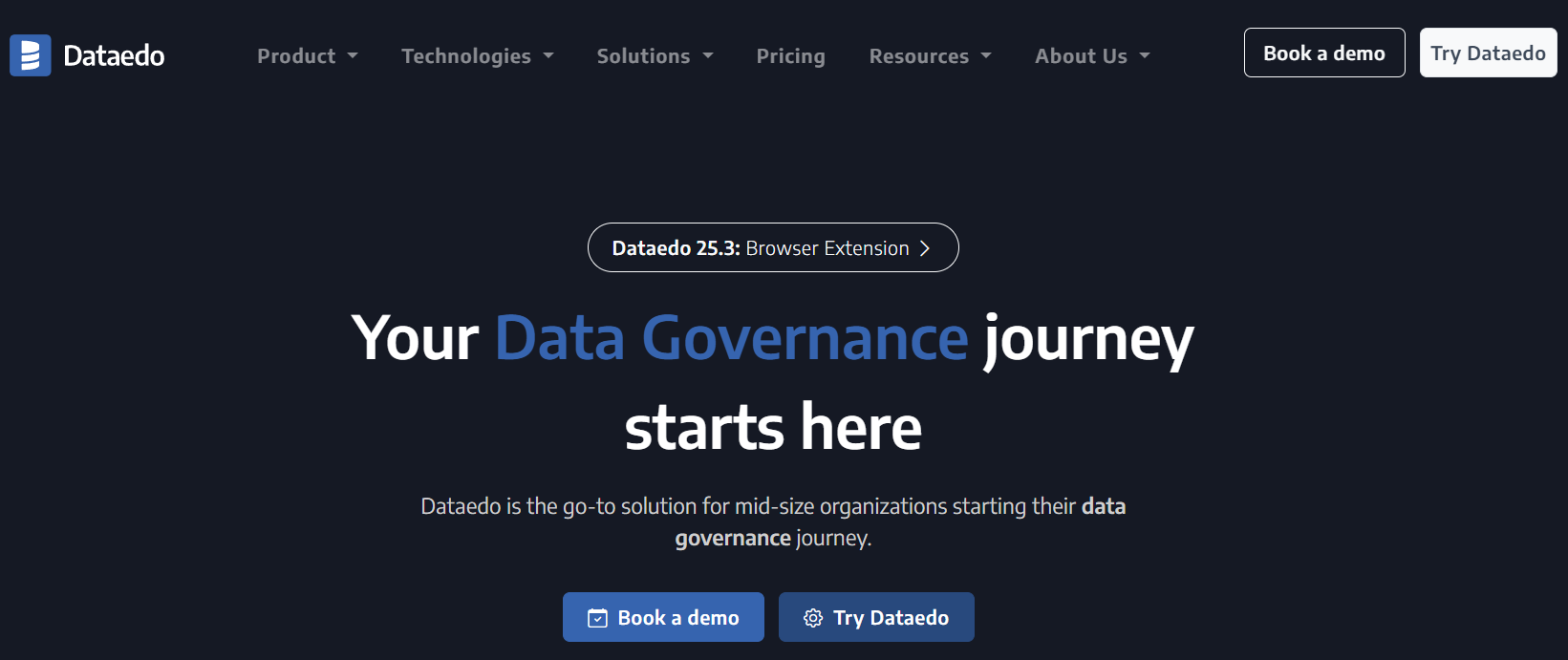
Dataedo focuses on simplicity and documentation-first workflows. It helps teams automatically generate data dictionaries and database documentation without needing complex setups or governance modules.
Ideal for teams that want to improve visibility into their database structure quickly, it provides a straightforward way to document schema details and share them across teams.
Key features
-
Schema-based extraction: Automatically pulls metadata from relational databases like SQL Server, MySQL, and PostgreSQL.
-
Customizable documentation: Allows users to add comments, definitions, and descriptions for tables and columns.
-
Offline sharing: Exports documentation as HTML, PDF, or Excel for easy sharing during audits or reviews.
-
Version control: Tracks changes in definitions and schema updates over time to ensure accuracy.
-
Lightweight setup: Doesn’t require additional infrastructure or technical maintenance.
Ideal for
Dataedo is best suited for engineering or documentation-focused teams that need to create and share database documentation quickly. It’s particularly useful for small to mid-sized companies or teams that prioritize data transparency and documentation over advanced governance features.
3. Atlan
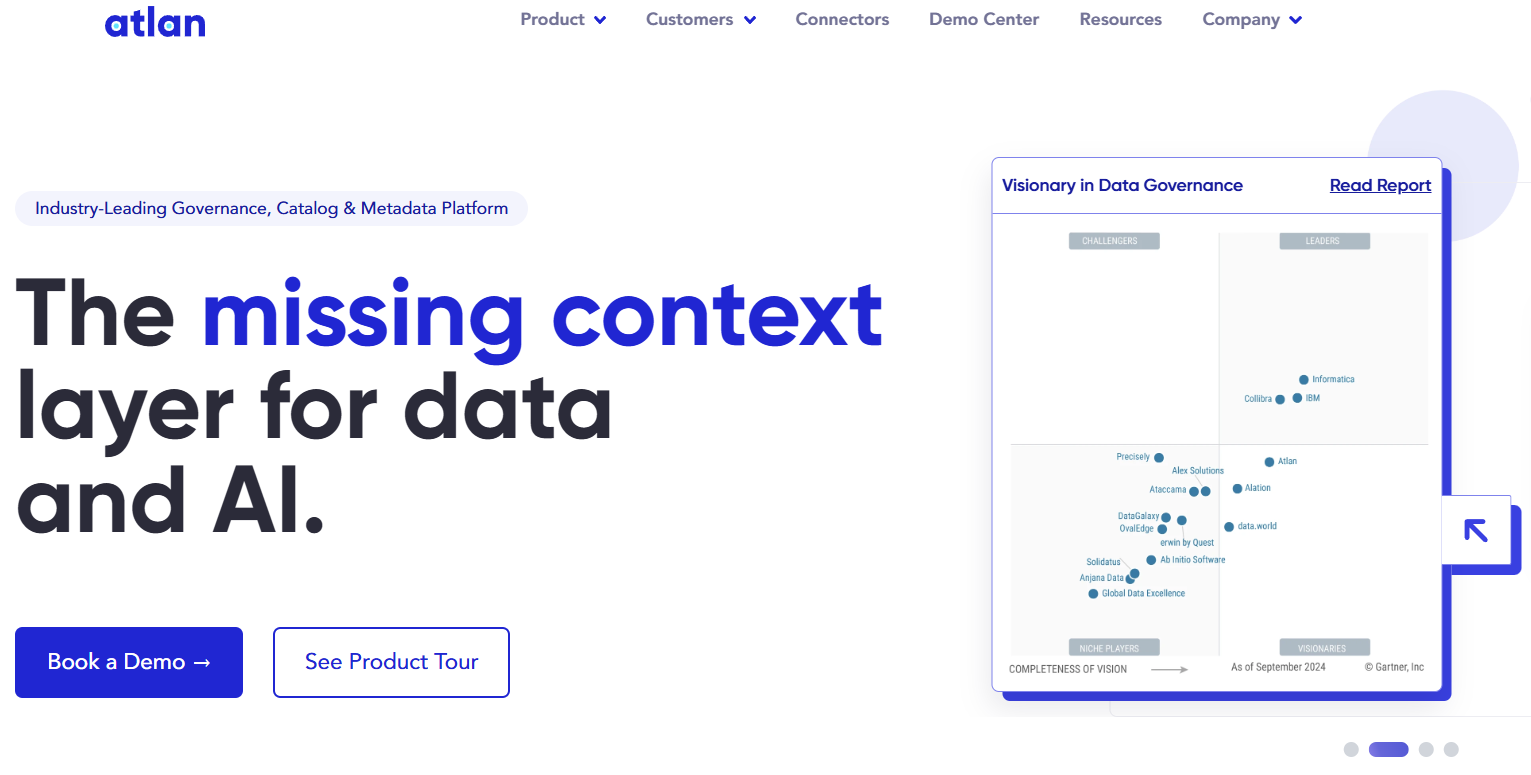
Atlan is known for bringing collaboration into metadata and data dictionary management. It helps data, analytics, and governance teams work together through a unified interface where users can document, discuss, and manage business terms in real time. Built with a strong focus on user experience, it connects people as much as it connects data.
Key features
-
Automated metadata sync: Continuously captures schema and glossary terms from multiple data systems and keeps them up to date.
-
Context-rich documentation: Allows users to annotate fields, add business meanings, and link definitions to metrics and dashboards.
-
Collaboration tools: Integrates with communication platforms like Slack and Teams for real-time notifications, comments, and reviews.
-
AI-assisted metadata enrichment: Suggests missing terms or definitions using intelligent recommendations.
-
Role-based access: Lets administrators control who can edit or certify terms, maintaining governance standards.
Ideal for
Atlan suits data and analytics teams in mid-to-large enterprises that prioritize collaboration and real-time knowledge sharing. It’s especially helpful for organizations looking to make their data documentation and discovery more social, transparent, and self-service-driven, bridging the gap between data producers and consumers.
4. DataHub
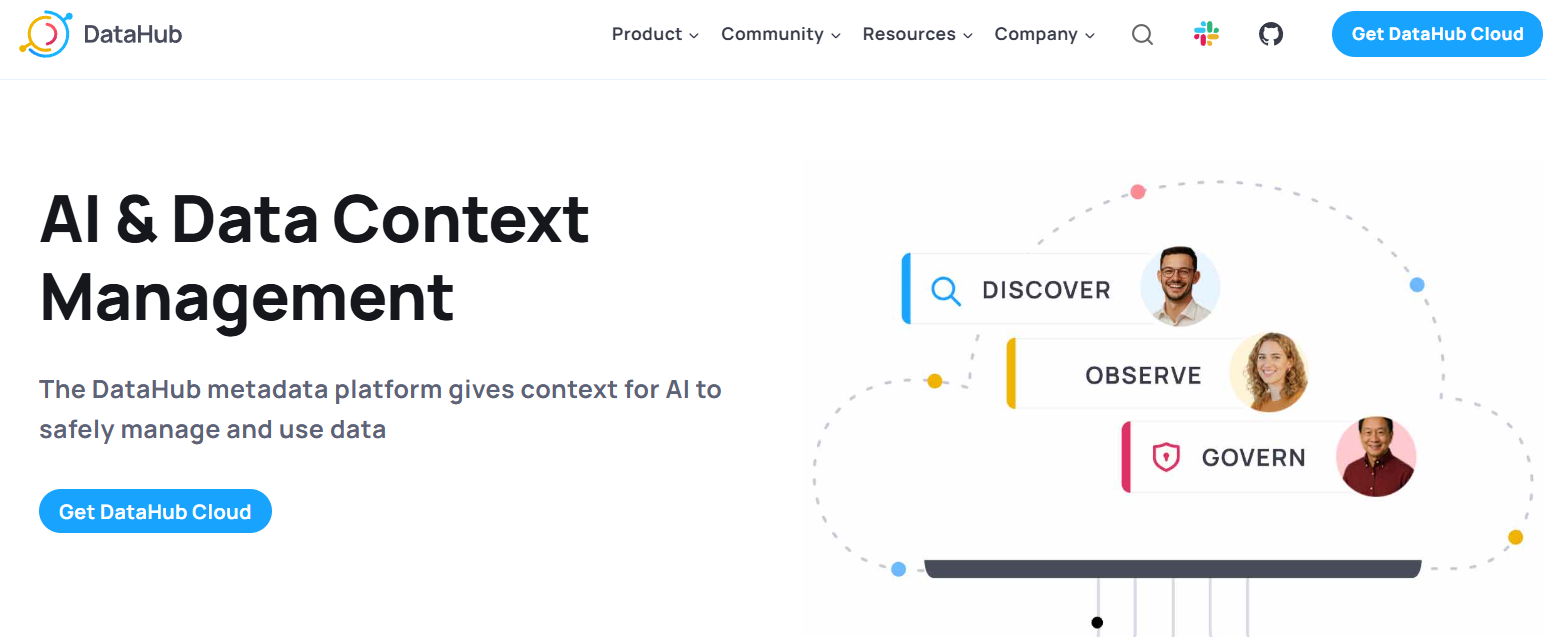
DataHub, originally developed by LinkedIn, is an open-source metadata platform that provides a powerful foundation for building custom data dictionaries and catalog solutions. It’s designed for scalability and real-time metadata updates, making it a favorite among data engineering teams who want flexibility without vendor lock-in.
Key features
-
Event-driven architecture: Automatically syncs schema and metadata changes across databases, warehouses, and BI tools in near real time.
-
Graph-based model: Captures relationships between datasets, fields, and owners to help visualize data dependencies and lineage.
-
Extensible APIs: Allow teams to build custom metadata and data dictionary applications that integrate with existing workflows.
-
Strong community support: Maintained by an active open-source community with frequent updates and plugins.
-
Security & access control: Provides role-based access management for sensitive metadata.
Ideal for
DataHub is ideal for data engineering and DevOps teams in tech-driven organizations that want complete control over their metadata architecture. It’s a great fit for companies seeking an open-source, highly customizable framework to manage data dictionaries and governance workflows internally, rather than relying on proprietary platforms.
5. Amundsen
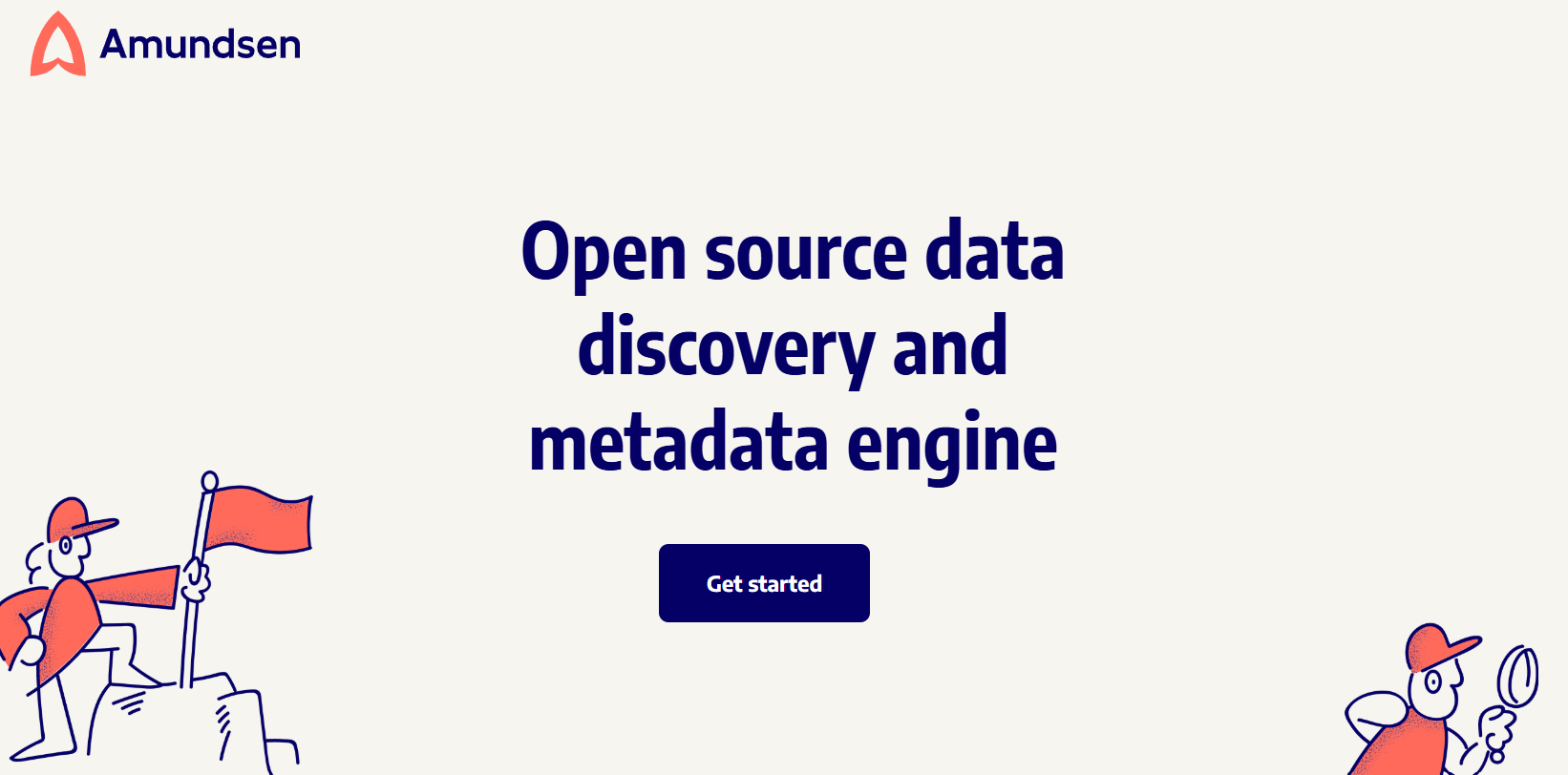
Amundsen, created by Lyft, is a lightweight open-source data discovery and dictionary platform that focuses on simplicity and accessibility. It was built to help data teams quickly find, understand, and trust their company’s data without the need for complex setups or heavy infrastructure.
Key features
-
Search-driven discovery: Offers a Google-like search interface for users to find datasets, columns, and owners instantly.
-
Metadata indexing: Automatically extracts metadata, table definitions, and schema details from connected databases.
-
Ownership and lineage tracking: Displays who owns a dataset and how it connects to upstream and downstream sources.
-
Simple deployment: Uses Neo4j and Elasticsearch for easy setup and scaling within engineering environments.
-
Community-driven innovation: Maintained by open-source contributors, with continuous improvements and integrations.
Ideal for
Amundsen is ideal for startups and smaller data teams looking for a free, easy-to-deploy data dictionary tool that promotes discovery and transparency. It’s especially useful for organizations focused on data documentation, self-service analytics, and team enablement, without needing the governance depth of enterprise tools.
6. Collibra

Collibra is an enterprise-grade data governance platform that includes a robust data dictionary and business glossary module. It’s designed for organizations that need strict control over data definitions, ownership, and compliance across multiple business units and systems.
Collibra helps large enterprises build a culture of accountability and trust by combining governance workflows with clear, accessible documentation.
Key features
-
Automated metadata import: Connects to major data lakes, warehouses, and BI tools to capture and standardize metadata automatically.
-
Workflow-driven governance: Offers role-based approval, certification, and stewardship workflows to ensure consistent data definitions.
-
Audit and compliance dashboards: Tracks lineage, usage, and changes for audit readiness and regulatory compliance.
-
Integration with IAM systems: Connects with enterprise identity management solutions to manage permissions and maintain security.
-
Scalable architecture: Supports thousands of users and millions of metadata entities across global teams.
Ideal for
Collibra is best suited for large, regulated enterprises in industries such as finance, insurance, healthcare, and government, where compliance, traceability, and governance maturity are top priorities. It’s ideal for organizations seeking a centralized, governance-first data dictionary solution that integrates tightly with enterprise IT systems.
7. Apache Atlas
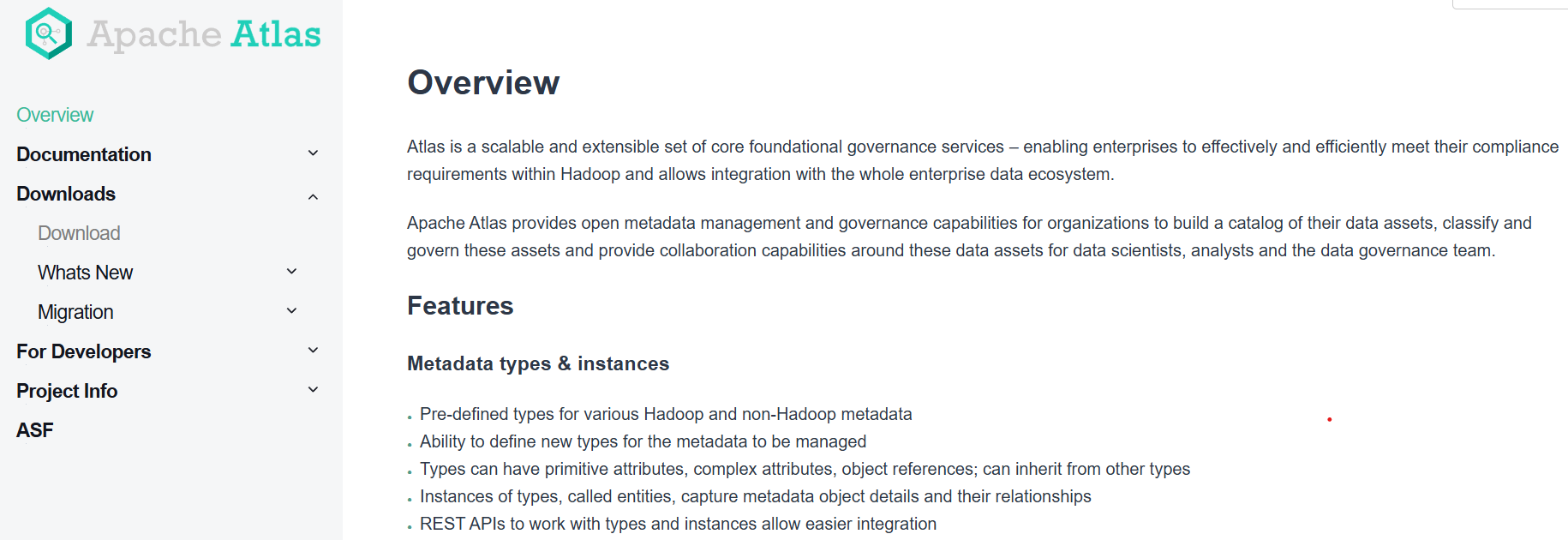
Apache Atlas is an open-source metadata and governance framework created by the Apache Software Foundation. It was originally built for Hadoop ecosystems but has evolved into a flexible metadata and data dictionary service that integrates with many big-data tools.
Atlas emphasizes policy enforcement, lineage tracking, and metadata modeling, making it a solid foundation for governance-driven organizations.
Key features
-
Metadata modeling: Allows teams to define entities, classifications, and relationships through customizable metadata types.
-
Policy-based governance: Supports tagging, classification, and access control policies aligned with compliance standards.
-
Lineage visualization: Provides clear lineage across Hadoop, Hive, Spark, and other data systems to improve traceability.
-
REST API support: Enables integration with other governance or data dictionary applications.
-
Open-source extensibility: Let's organizations extend capabilities and connect Atlas with their modern data stack.
Ideal for
Apache Atlas is best suited for engineering-led enterprises and organizations operating large-scale data environments built on Hadoop, Spark, or hybrid ecosystems. It’s ideal for companies that want an open-source, governance-first data dictionary tool to customize and embed within their broader data management framework.
8. Alation

Alation is an enterprise metadata management platform that combines data cataloging, governance, and data dictionary capabilities. It helps large organizations bring structure, visibility, and intelligence to their data assets through AI-powered discovery and collaborative curation.
Alation focuses on making data usage more transparent and ensuring that every user can understand the meaning behind the data they access.
Key features
-
AI-driven metadata enrichment: Automatically suggests business definitions, owners, and usage patterns for data fields.
-
Integrated business glossary: Connects terms, policies, and data elements to ensure consistent language across teams.
-
Collaboration and trust features: Enable users to rate, review, and flag data assets for quality assurance.
-
Compliance and policy management: Links data dictionary entries with governance rules to ensure regulatory readiness.
-
Scalable architecture: Supports deployment across global enterprises with thousands of data users.
Ideal for
Alation is best suited for large enterprises seeking an AI-assisted metadata platform that supports collaboration, governance, and compliance at scale. It’s ideal for organizations aiming to improve data literacy, streamline governance, and build trust in enterprise-wide data assets.
Key features to look for in a data dictionary tool
When you’re evaluating the best data dictionary tools, it’s not just about listing metadata; it’s about how well the platform automates processes, encourages collaboration, supports governance, and grows with your business. Below are five essential features to look for.

1. Automated metadata ingestion & data quality detection
-
The tool should automatically extract schemas, columns, and relationships from all your connected databases, warehouses, and SaaS systems.
-
It should sync metadata changes in real time using APIs or event-based connectors to keep your documentation always up to date.
-
A strong platform can also detect data quality issues like duplicates, inconsistencies, or missing relationships before they cause reporting errors.
-
This level of automation helps teams save hours of manual work while maintaining clean and reliable metadata across every system.
2. Collaboration and stewardship workflows
-
A modern data dictionary should allow both technical and business users to contribute to and review definitions collaboratively.
-
It must include approval and certification workflows to ensure that every data term is accurate and verified.
-
The platform should assign clear ownership so that data stewards and analysts stay accountable for their respective domains.
-
By supporting open collaboration, the tool helps organizations build stronger data literacy and trust across teams.
3. Integration with catalogs, lineage & BI tools
-
The best tools integrate seamlessly with data catalogs, lineage maps, and BI tools such as Power BI, Tableau, or Looker.
-
They should make definitions visible directly inside dashboards and analytics interfaces to reduce confusion and context switching.
-
Real-time synchronization through APIs ensures that updates in the dictionary are immediately reflected across all connected systems.
-
This level of integration ensures your data dictionary becomes the single, trusted reference for everyone using organizational data.
4. Security & governance alignment
-
Every reliable data dictionary must enforce role-based access control (RBAC) so only authorized users can edit or approve definitions.
-
It should maintain detailed audit logs that record every change for transparency and accountability.
-
The platform should help organizations meet major data privacy and security standards like GDPR, HIPAA, and DPDP 2023.
-
By embedding governance into everyday workflows, the tool ensures that compliance isn’t an afterthought but a built-in strength.
5. Scalability for enterprise metadata
-
The tool must scale effortlessly to manage millions of data elements without slowing down.
-
It should support distributed teams and departments while maintaining consistency across global operations.
-
A cloud-native, distributed architecture allows high performance and reliability even as your metadata volume grows.
-
A scalable data dictionary ensures that your investment continues to deliver value as your data ecosystem expands.
A strong data dictionary tool brings together automation, collaboration, governance, and scalability to create a single source of truth for your organization’s data. When these features come together, your teams spend less time reconciling definitions and more time unlocking insights that drive growth.
How to choose the right tool for your business
Choosing a data dictionary tool is about picking a platform that fits how your company works today and will grow tomorrow. Here are five actionable checkpoints to guide your decision.
1. Map your data landscape
-
Identify all major data sources (databases, warehouses, lakes, SaaS) and list how they connect.
-
Note how many users access each system and the frequency of changes to schemas or tables.
-
Prioritize tools that support the most common systems in your stack and can scale to include new ones.
2. Evaluate integration and automation needs
-
Check whether the tool offers connectors or APIs for your main platforms, like BI tools, ELT systems, and SaaS apps.
-
Ask if metadata ingestion is automatic and real-time, or if manual updates are required.
-
Get clarity on how much setup or engineering support is needed to get the tool up and running.
3. Assess governance and compliance requirements
-
Determine what regulatory standards your company must meet (e.g., GDPR, HIPAA, DPDP 2023) and whether the tool supports audit logs and access controls.
-
Confirm whether the tool allows role-based permissions and tracks who changed or approved a definition.
-
Review how the tool archives version history and whether it provides lineage tracking for compliance purposes.
4. Focus on usability and adoption
-
Invite sample users (both analysts and business users) to test the interface and measure how quickly they can find and understand a data definition.
-
Look for collaboration features like comments, review workflows, and alerting to keep definitions current.
-
Ensure the tool can embed definitions into dashboards or BI reports so end users don’t need to leave their workflow.
5. Consider total cost and scalability
-
Calculate the total cost of ownership: include license, implementation, training, and ongoing maintenance.
-
Check how the tool handles growth: can it manage more than a million metadata entries, multiple regions, and increased user load?
-
Plan for tomorrow: ensure the vendor roadmap supports your future data architecture (cloud-native, hybrid, multi-cloud).
To make a confident decision on the best data dictionary tool, look for one that fits your stack, supports automation, enforces governance, drives adoption, and scales with your business. Your goal is not just “another tool”; it’s a strategic investment in trusted data across teams.
Implementation & adoption best practices
Implementing a data dictionary tool successfully goes beyond setup; it’s about driving adoption across teams. These five best practices help ensure your dictionary becomes a trusted and regularly used source of truth for your organization.
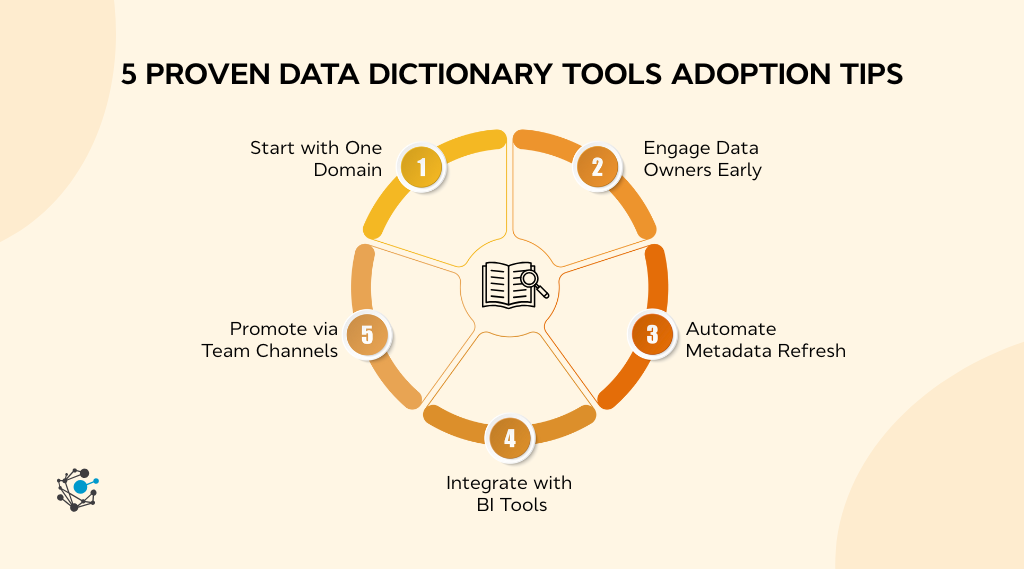
1. Start with one domain
Begin with a single domain, such as Customer or Finance, to build focus and momentum. Document key data elements, review them with stakeholders, and publish them once validated.
This smaller rollout helps you refine processes, identify challenges, and show early results. When users see the benefits of having clear, consistent definitions, it becomes easier to scale the dictionary to other business domains.
2. Engage data owners early
Involve data owners, analysts, and business users from the start. Their input ensures that definitions reflect both technical accuracy and business meaning. Early engagement also builds ownership and accountability, which drives long-term maintenance.
When people feel responsible for the quality of metadata, they naturally keep it up to date, creating a culture of data stewardship across departments.
3. Automate metadata refresh
Automation keeps your dictionary relevant and reliable. Set up automated metadata extraction and refresh schedules so that new columns, schema updates, or deleted tables are reflected instantly.
This reduces manual work and ensures everyone is always looking at the latest version of your data landscape. The more seamless your automation, the more trustworthy your data dictionary becomes.
4. Integrate with BI tools
Make your dictionary accessible where data is used most. Integrate it directly with BI platforms like Power BI or Tableau so users can view definitions without leaving their dashboards.
This integration helps analysts understand data context instantly, improves consistency across reports, and reduces errors in analysis. When your dictionary lives within everyday tools, adoption happens naturally.
5. Promote via team channels
Visibility drives engagement. Share updates and new dictionary entries through team collaboration platforms like Slack, Microsoft Teams, or internal newsletters. Host quick sessions or “Data Days” to highlight how the dictionary improves decision-making.
When data stewardship becomes part of everyday conversation, awareness spreads, and participation increases. Over time, this steady promotion helps turn data documentation into a shared habit, not a one-time project.
The success of a data dictionary tool depends on adoption, not installation. Start small, engage people, automate updates, integrate where work happens, and communicate often. When these steps come together, your organization moves from data confusion to data confidence, where every definition, field, and metric is clear and trusted.
Conclusion
The line between data dictionaries, catalogs, and governance is fading fast. Modern organizations need a unified solution that brings them together to create data clarity, consistency, and trust. A strong data dictionary tool doesn’t just store definitions; it becomes the foundation for confident, data-driven decision-making.
OvalEdge makes this possible by combining automation, collaboration, and governance in a single, intuitive platform. It helps teams discover metadata automatically, maintain consistent definitions, and ensure compliance without complexity.
If your goal is to make data accessible, accurate, and audit-ready, it’s time to see how OvalEdge can unify your metadata management. Book a personalized demo to see how you can turn your data dictionary into a living source of truth that powers every decision.
FAQs
1. How does a data dictionary improve data governance?
A data dictionary strengthens data governance by defining every element’s meaning, format, and owner. This structure prevents misinterpretation, enforces consistent metrics, and supports compliance audits like GDPR or HIPAA. It provides transparency and accountability, helping teams trust and manage their data responsibly.
2. What is the difference between a data dictionary and a data catalog?
A data dictionary explains what each data element means, including fields, data types, and rules. A data catalog, on the other hand, shows where that data lives and how it connects. Modern tools integrate both to offer a complete view of meaning, lineage, and usage.
3. How often should a data dictionary be updated?
A data dictionary should update automatically or at least weekly to stay aligned with schema changes and business definitions. Automated refresh ensures that new tables, renamed columns, or deprecated fields are captured without manual work, keeping the dictionary continuously accurate and relevant.
4. Can small businesses benefit from data dictionary tools?
Yes. Even small teams gain value from a data dictionary because it eliminates confusion and data duplication. Cloud-based and open-source options make implementation easy without heavy infrastructure. For growing businesses, early adoption builds the foundation for future data governance and compliance.
5. What metrics should you track to measure data dictionary adoption?
Key metrics include user logins, the number of definitions reviewed or certified, the percentage of documented assets, and search frequency. Tracking these KPIs shows how actively teams use and maintain the dictionary, turning it from a static reference into a living, collaborative resource.
6. How does OvalEdge simplify data dictionary management?
OvalEdge automates metadata discovery, links business definitions with technical lineage, and enforces governance through workflows. It identifies data quality issues, uncovers relationships, and provides a single view of metadata across all systems, helping teams maintain consistency and compliance effortlessly.
OvalEdge recognized as a leader in data governance solutions
.png?width=1081&height=173&name=Forrester%201%20(1).png)
“Reference customers have repeatedly mentioned the great customer service they receive along with the support for their custom requirements, facilitating time to value. OvalEdge fits well with organizations prioritizing business user empowerment within their data governance strategy.”
.png?width=1081&height=241&name=KC%20-%20Logo%201%20(1).png)
“Reference customers have repeatedly mentioned the great customer service they receive along with the support for their custom requirements, facilitating time to value. OvalEdge fits well with organizations prioritizing business user empowerment within their data governance strategy.”
Gartner, Magic Quadrant for Data and Analytics Governance Platforms, January 2025
Gartner does not endorse any vendor, product or service depicted in its research publications, and does not advise technology users to select only those vendors with the highest ratings or other designation. Gartner research publications consist of the opinions of Gartner’s research organization and should not be construed as statements of fact. Gartner disclaims all warranties, expressed or implied, with respect to this research, including any warranties of merchantability or fitness for a particular purpose.
GARTNER and MAGIC QUADRANT are registered trademarks of Gartner, Inc. and/or its affiliates in the U.S. and internationally and are used herein with permission. All rights reserved.


-1.png)
.webp)
